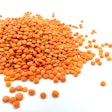
The global food industry is in for yet another major shock. With two former Soviet allies – Russia and Ukraine – at loggerheads, there is every possibility of a massive disruption in the global food supply chain.
Once known as the Soviet Union’s breadbasket, Ukraine’s invasion could lead to a potential escalation of wheat prices, and generate kinks in global agricultural exports.
As a result, pantry staples such as flour, pasta and bread could become more expensive. Together, both countries comprise 13% of global wheat production.
Wheat prices were already accelerating in anticipation of the conflict, with prices hitting US$ 9.35 on the Chicago Board of Trade, reaching the highest point since July 2020.
As the war progresses, the real direct impacts on agricultural exports are still unraveling. With five major grain ports of Ukraine being already bombarded, analysts are apprehensive that continued disruptions could impact the upcoming harvest season in June.
Until now, 66% of wheat and barley are being exported, but if sanctions continue until the seventh month, it could interfere with the global foodgrains availability.
From North America to Europe, and from Africa to the Middle East, the crisis is likely to disrupt the demand-supply dynamics of the food crops industry. If unabated, the war could usher in a prolonged global food price inflations.
Let's focus on the impact the Russia-Ukraine crisis will have on wheat supplies across the Americas, and what measures the continents are likely to take to safeguard their wheat supplies.
How would the ongoing crisis impact current scenario of the North American wheat industry?
According to the U.S Department of Agriculture, wheat ranks third among U.S. field crops in planted acreage, production, and gross farm receipts — behind corn and soybeans.
In marketing year 2021/22, U.S. farmers produced a total of 1.6 billion bushels of winter, durum, and other spring wheat from a harvested area of 37.2 million acres. U.S. winter wheat planted area for 2022/23 is projected at 34.4 million acres, up 2% from the previous year.
Besides achieving self-sufficiency in domestic production, the country has been relying on imports from other countries, including Russia and Ukraine. As of 2021, wheat and wheat related products import from Russia totaled nearly US$ 24 million in value.
As per a report published by Future Market Insights, out of the anticipated $5.1 billion wheat protein industry, North America is anticipated to account for a significant market share in the years to come. However, in the backdrop of current circumstances, given the history of the two Cold War rivals, this dependence is likely to wane in forthcoming months.
Across the country, grocery manufacturers aver that, although a majority of ingredients and materials for American products are domestically sourced, the economic impact of the crisis on wheat products is likely to be global. Hence, massive price hikes are anticipated for wheat-sourced products on the American soil.
Furthermore, the American Bakers Association expects higher prices on breads, beer, cereal and animal feed, among other things, impacting billions of dollars’ worth of products.
There are a number of factors pushing the prices up so quickly. Russia’s attack has imperiled shipping in the Black Sea region, which is where much of the area’s wheat shipments are exported. And the Russian attacks could disrupt the ability of Ukrainian farmers to plant and harvest crops in 2022.
A separate school of thought, however, advocates that the war is expected to have a modest impact on food costs, though grocery inflation is likely to ease this year regardless of the conflict.
The impact on U.S. consumers will be muted because food commodities, accounting for a small portion of the price Americans pay for groceries, or less than 15 cents for each dollar spent. They also propound that the global price volatility would have a negligible impact on the supermarket cost of a loaf of bread or a box of cereals.
Argentinian farmers likely to miss out on grains stockpiling amid crisis
While the U.S. presents a largely stable outlook, the scenario is somewhat different across South America, most particularly across Argentina.
The country’s 2021/22 wheat production reached 22.1 million tons, according to official data, but farmers have already sold 15.5 million tons of the grain and the domestic demand for wheat is 6 million tons.
However, a severe drought combined with export caps are limiting Argentina’s ability to take advantage of rising wheat and soy prices arising out of the Ukrainian conflict. Realizing this, the Argentine government has decided to establish a mechanism to control domestic wheat prices and temper food inflation.
As of March 2, 2022, the grain closed at an average of 32,103 pesos ($298) per tonne, 19% higher than just a week ago.
This policy contemplates transferring 800,000 tons of wheat to the domestic market to guarantee supply and achieve price stabilization of these key products. The price mechanism would remain in place until the end of January 2024 and would focus on prices of domestic sales of wheat flour and dry pasta.
Securing food supplies
As the world waits and watches how the current conflict shapes up, countries are doing everything in their power to secure food supply chains, looking for alternative sources of foodgrains.
Amid apprehensions that the crisis may worsen the food security situation, especially across the developing and underdeveloped countries, policies are being designed to cushion the most vulnerable regions from massive price shocks.
With the global population expected to reach 8.6 billion in 2030, and ultimately to 9.8 billion by 2050, the world will need at least 50% more food, 30% more water and 45% more energy.
Therefore, it's extremely important to make contingencies in case the conflict worsens and induces a further food shortage in the forthcoming months. Several countries across Europe and Asia are looking toward more stable and opportunistic wheat markets, including China and India.
Besides, ongoing conflict resolution initiatives, mediations and military action are expected to yield at least some outcome of this standoff.
As this happens, global supply chains are expected to repair themselves. How soon the resolution is expected to take place is unclear.
The world, therefore, can only observe how the sequence of events pan out in the coming months.
Author Abizer Shaikhmahmud is a content writer and editor at Future Market Insights, an ESOMAR-certified market research and consulting market research company. He has written extensively about evolving trends in Technology and allied industries.
Future Market Insights (FMI), headquartered in Dubai with offices in the U.S., UK and India, is an ESOMAR-certified market research and consulting market research company. FMI is a leading provider of market intelligence and consulting services, serving clients in over 150 countries; its market research reports and industry analysis help businesses navigate challenges and make critical decisions with confidence and clarity amidst breakneck competition. Now avail flexible Research Subscriptions, and access Research multi-format through downloadable databooks, infographics, charts, and interactive playbook for data visualization and full reports through MarketNgage, the unified market intelligence engine powered by Future Market Insights.


















